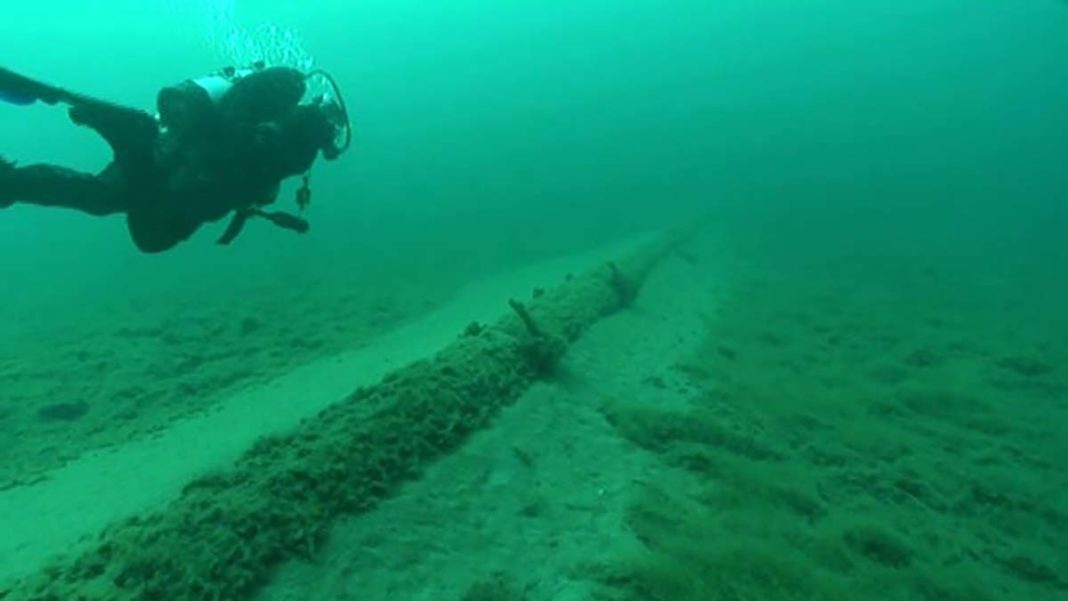Public consultation on Line 5 tunnel project underway
MICHIGAN—Public consultation is underway as the United States Army Corps of Engineers (USACE) looks at the environmental impacts of Enbridge Energy’s proposed Line 5 tunnel under the Straits of Mackinac. Enbridge is seeking to replace its existing dual pipelines on the lake bottom that were built in 1953.
At an online public event earlier this month, USACE heard from supporters and opponents of the project. Supporters, including business and labour groups and their members and representatives, spoke to potential jobs that would be created by construction of the tunnel, and of the need for the oil and natural gas products, especially liquid propane, shipped through the pipeline. They also pointed out that the tunnel is a safer option than the existing pipeline.
Opponents of the tunnel project spoke about the environmental impact of the project and how the pipeline’s products contribute to climate change. Some acknowledged a tunnel would be safer than the existing aging pipeline but said both options pose too much of a risk to the Great Lakes. Opponents also noted the bulk of products shipped through Line 5 are destined for Canada, with Michigan assuming the greater risk and Canada and Enbridge realizing the benefits.
In a statement on the USACE public comment meetings, Enbridge said it “supports a thorough, robust regulatory process and believes a diversity of viewpoints and perspectives are important. We welcome the wide-ranging public input that is part of the Army Corps’ process.”
“Enbridge remains focused on the sustained and safe operation of Line 5 and on a timely, yet thorough, project permitting process. State and Federal regulators drive the process and the calendar for the Tunnel. Our sincerest hope is that those who are committed to the Tunnel project and Line 5’s long-term safety and environmental protection will collaborate to do this as efficiently and effectively as possible. Enbridge is committed to working with the Corps to reduce environmental impacts from construction and operation.”
Once complete, stated Enbridge, “The tunnel will make Line 5’s crossing of the Straits even safer, while creating Michigan jobs and securing the needed energy for consumers in Michigan and the region.”
“The tunnel would make Line 5 even safer as the pipeline would be 60 to 250 feet below the lakebed inside thick concrete walls eliminating the chance of an anchor strike and reducing the chance of any product ever reaching to water to just about zero,” said Ryan Duffy, Enbridge strategist, corporate communications and media relations.
What we should be concerned about, Roger Gauthier told The Expositor, is that the EIS will take up to two years to complete, which means several years more before Enbridge would even begin construction of the tunnel. “The risk has not gone away one iota,” he said. “The message that’s got to come out here is that the risk continues, the line needs to be shut down, there is alternative pathways for the crude to get to Sarnia.”
The pipeline doesn’t have to go through the heart of the Great Lakes, Mr. Gauthier said. “The network for transporting crude around Lake Michigan through Enbridge Line 78 in southern Michigan to Sarnia can handle the demand. The risk of a spill is totally unacceptable.”
While the vast amount of damage would occur over 600 to 700 miles of shoreline in Michigan, there is no question about a spill reaching Georgian Bay, he said. “The oil itself if it (Line 5) does rupture, it will be on the shorelines of Georgian Bay. It will be on the shorelines of Manitoulin. It should be as much of a concern for Canadian cottagers as it is for the American shore property owners.”
This is not exclusively an environmental issue, he added. It’s an economic issue and it’s not just the shore property owners that would be affected by it. The transportation of goods and commodities from Lake Superior to Lakes Michigan and Huron navigates through the Straits of Mackinac or the northern part of Lake Huron. In the event of an oil spill, commercial navigation would be shut down while it was contained and cleaned up.
Mr. Gauthier retired from the USACE after 30 years and most of his focus during that time working for the USACE was on lake levels. He lives along the Straits of Mackinac now. “This is a threat,” he said. It’s a bigger threat I believe today than the story of radioactive waste from Bruce Nuclear. I think those two are the absolute biggest threats to the communities, and again, it’s not all environmental. It’s economic. It’s an economic driver here of the region. All too frequently the press typifies this as environmentalists against the oil industry and that’s incorrect.”
He would like to see Line 5 shut down and alternative pathways implemented. “This is a story that won’t go away,” Mr. Gauthier said. “There’s never been a pipeline in North America that’s been shut down before it has failed. That’s the most important part here.”
The USACE is taking public comments until October 14 and expects to release a draft Environmental Impact Statement in fall 2023.





